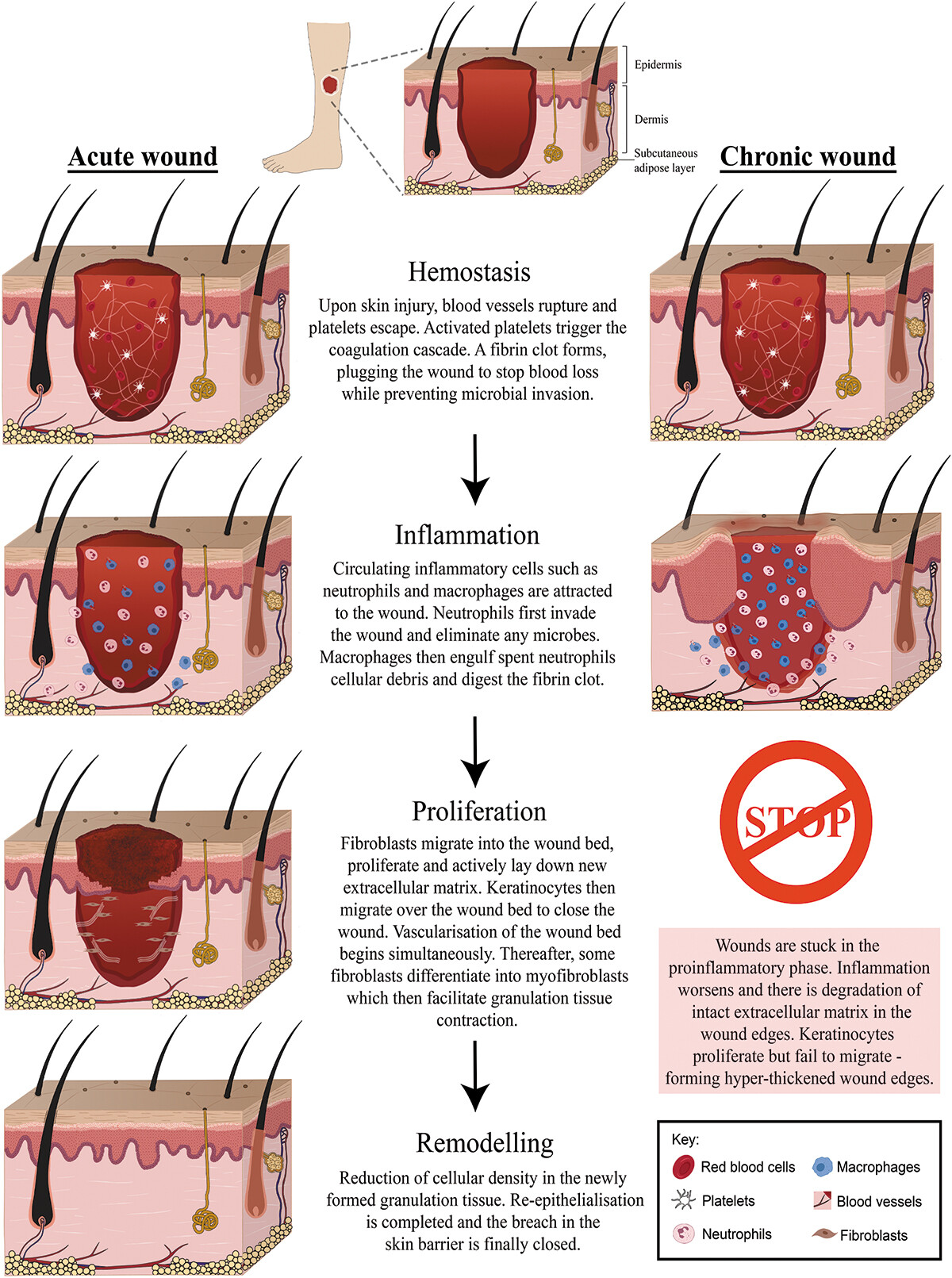The 4 Stages of
Wound Healing
Understanding these stages helps you monitor your progress and detect warning signs early.
1. Hemostasis
This initial phase starts immediately after injury. Blood vessels constrict and clotting begins. A temporary plug is formed to stop bleeding.
- Pain: Begins here as nerve endings are exposed.
- Size: Appears largest due to open injury.
2. Inflammation
White blood cells clear out debris and bacteria. Redness, swelling, and warmth are signs your immune system is working.
- Swelling & Pain: Most intense here.
- Pus & Moisture: Present as the body defends the site.
- Smell: A foul smell may signal infection.
3. Proliferation
New skin and blood vessels form. Fibroblasts lay down collagen. Granulation tissue fills the gap, and a scab forms as protection.
- Scab: Forms to protect regenerating skin.
- Size: Gradually reduces.
- Itch: Increases due to nerve activity.
4. Maturation (Remodeling)
This final phase may take weeks to months. Collagen is remodeled, and the wound closes. Pigmentation may return slowly.
- Moisture & Smell: Disappear.
- Pain & Swelling: Resolve.
- Scab: Falls off naturally, revealing new skin.

Tan, M. L. L., Toh, J. X. Y., Chan, S. Y., & Ng, K. W. (2023). Challenges faced in developing an ideal chronic wound model. Expert Opinion on Drug Discovery, 18(1), 99–114. https://doi.org/10.1080/17460441.2023.2165978
Why Tracking Matters
Tracking your wound’s progress using the Wound Tracker gives you visual and clinical insights. This can guide better home care and improve communication with healthcare providers. It empowers you to:
- Understand your healing phase
- Detect infection or delayed healing early
- Improve wound care with timely interventions